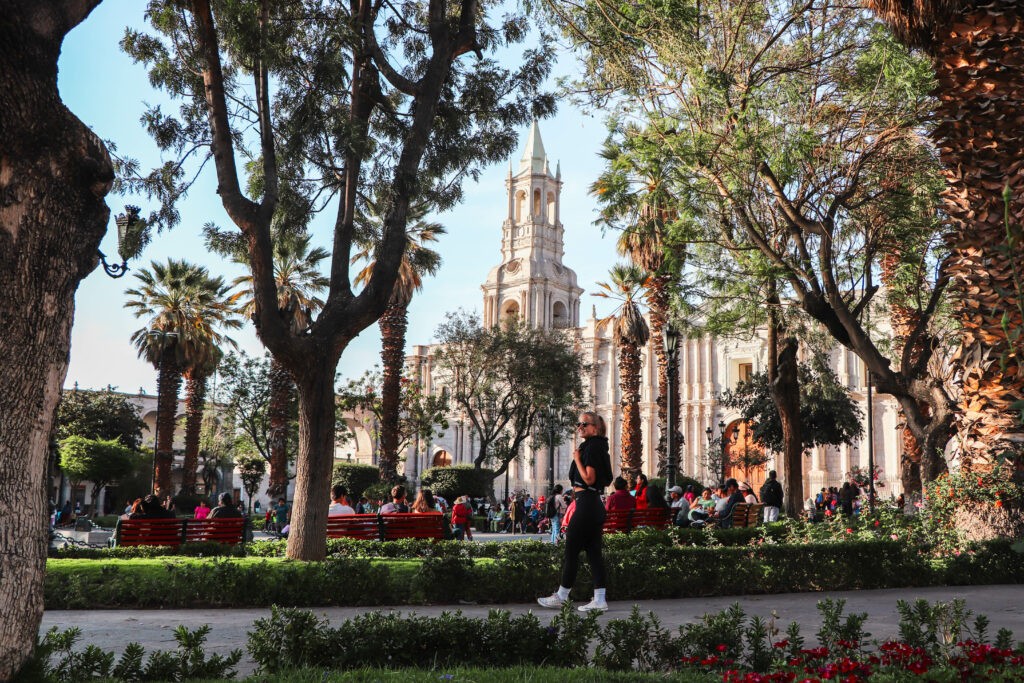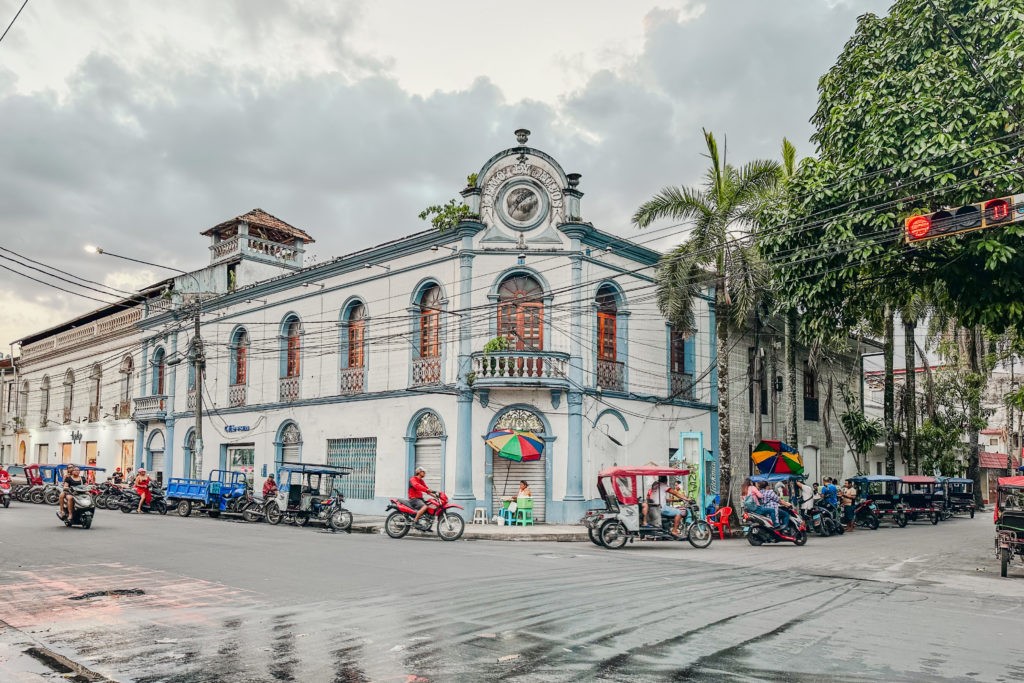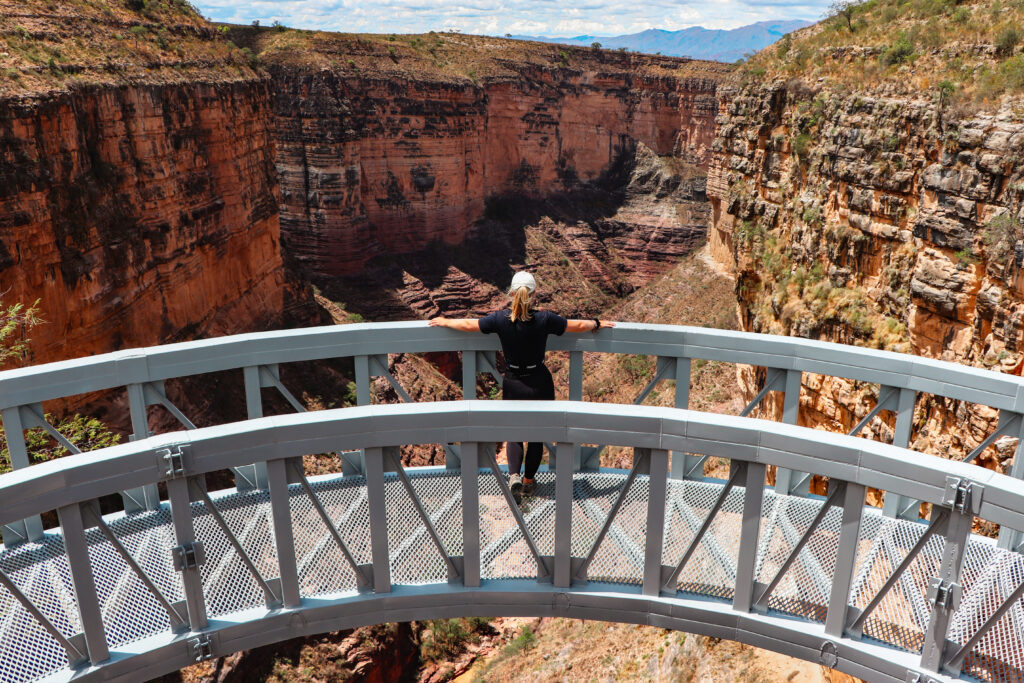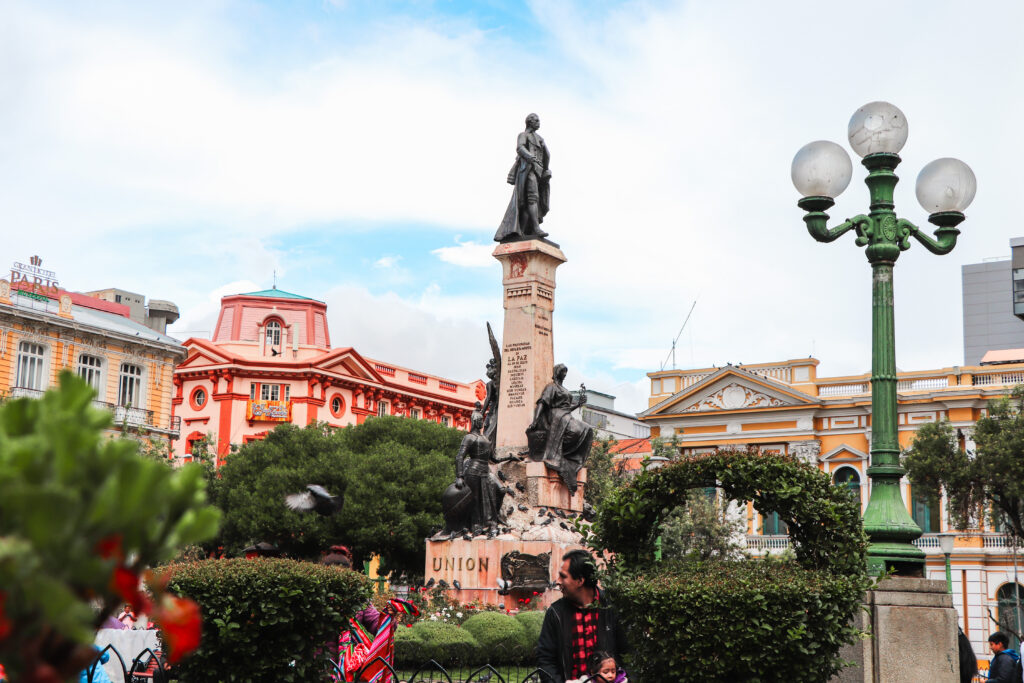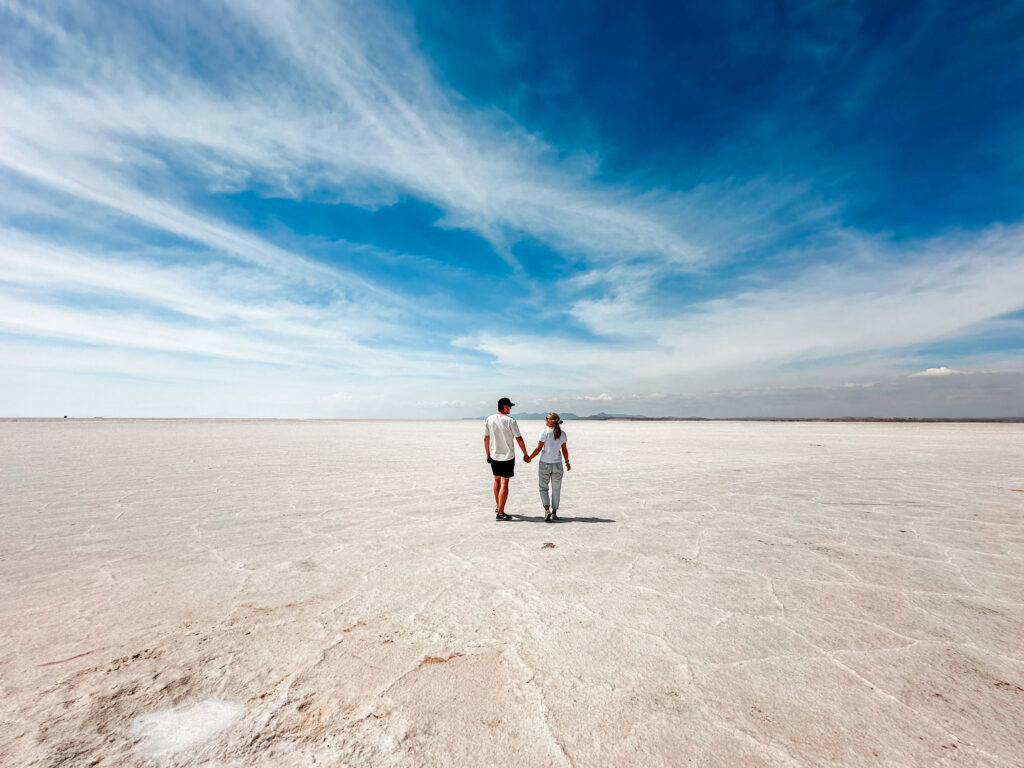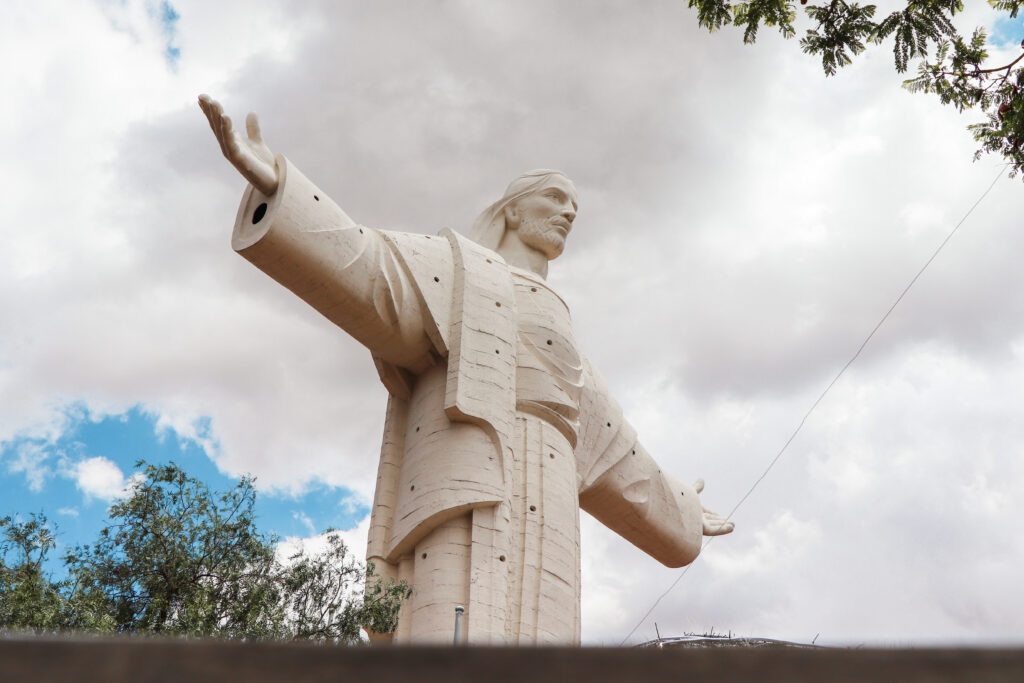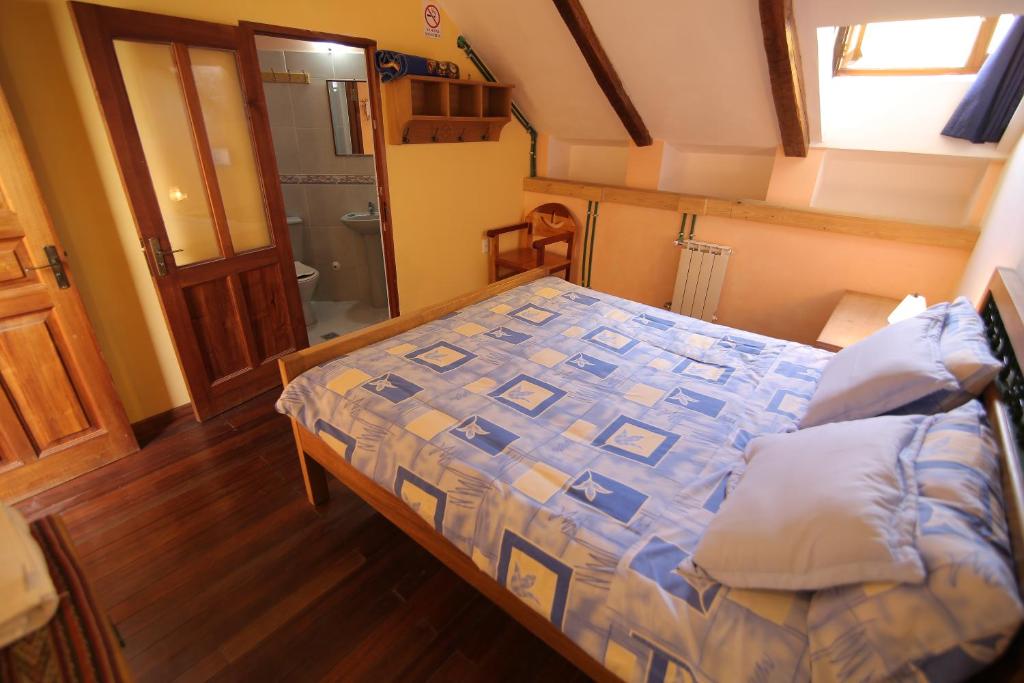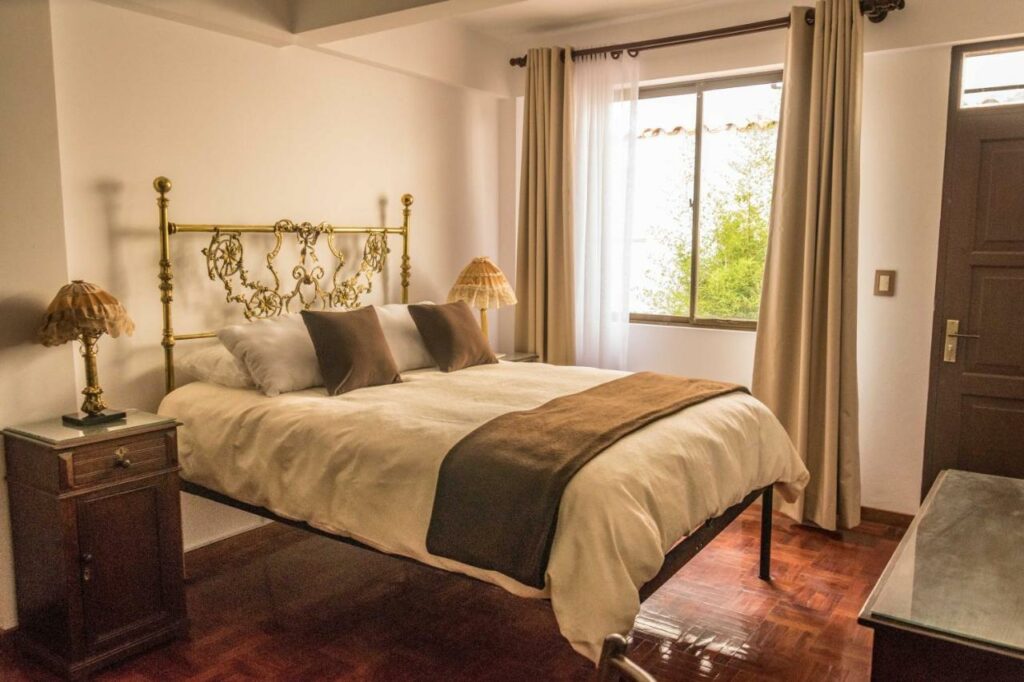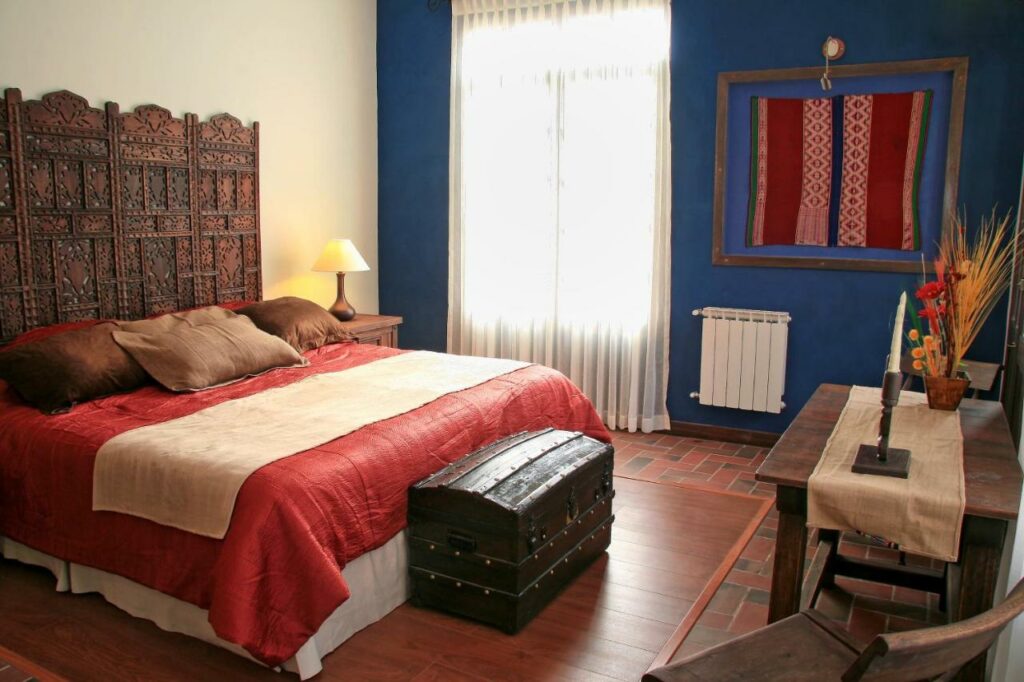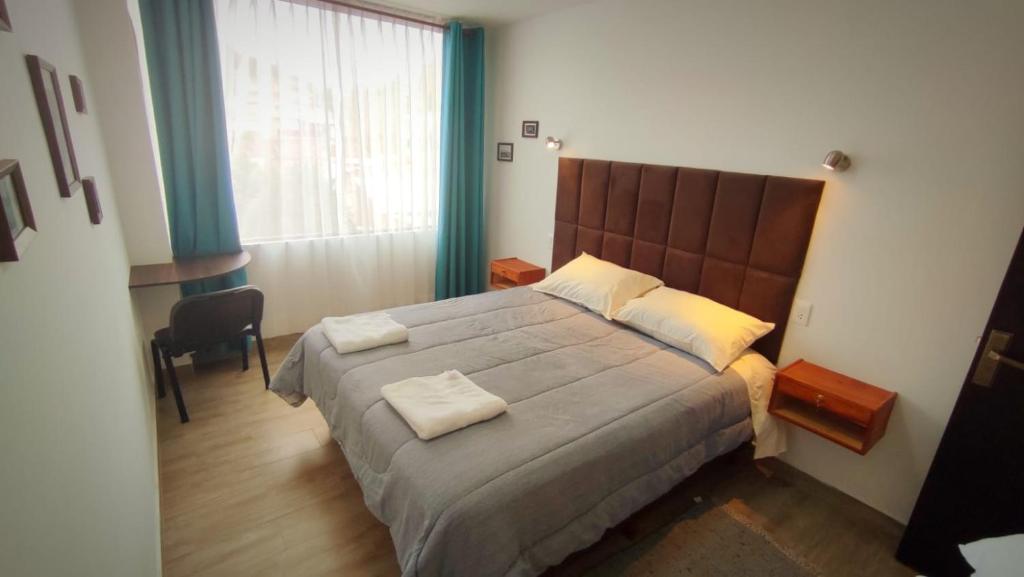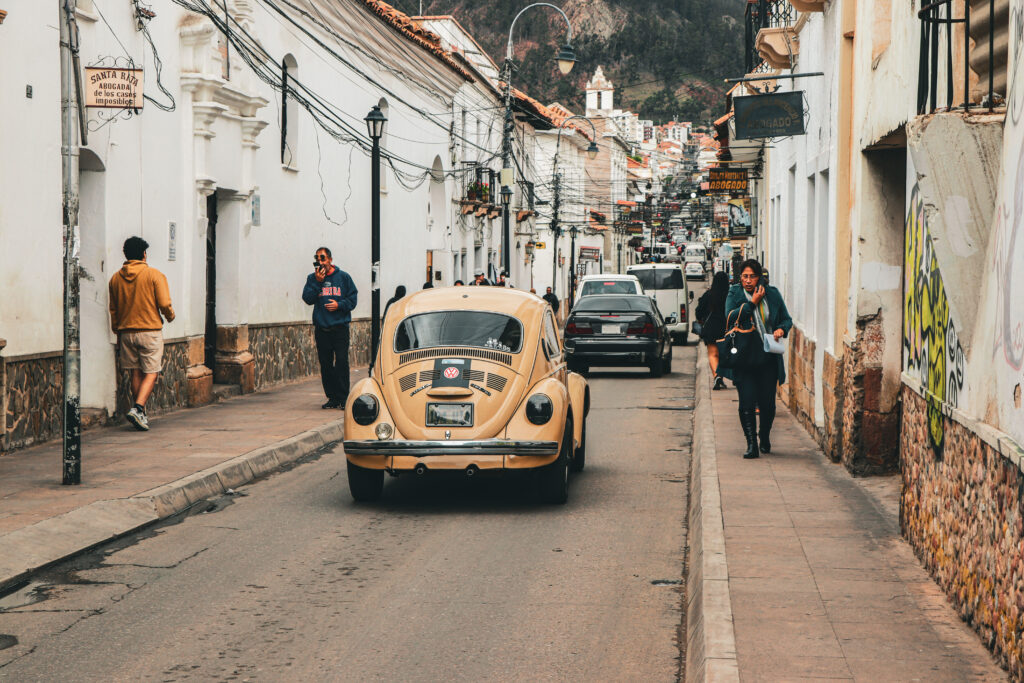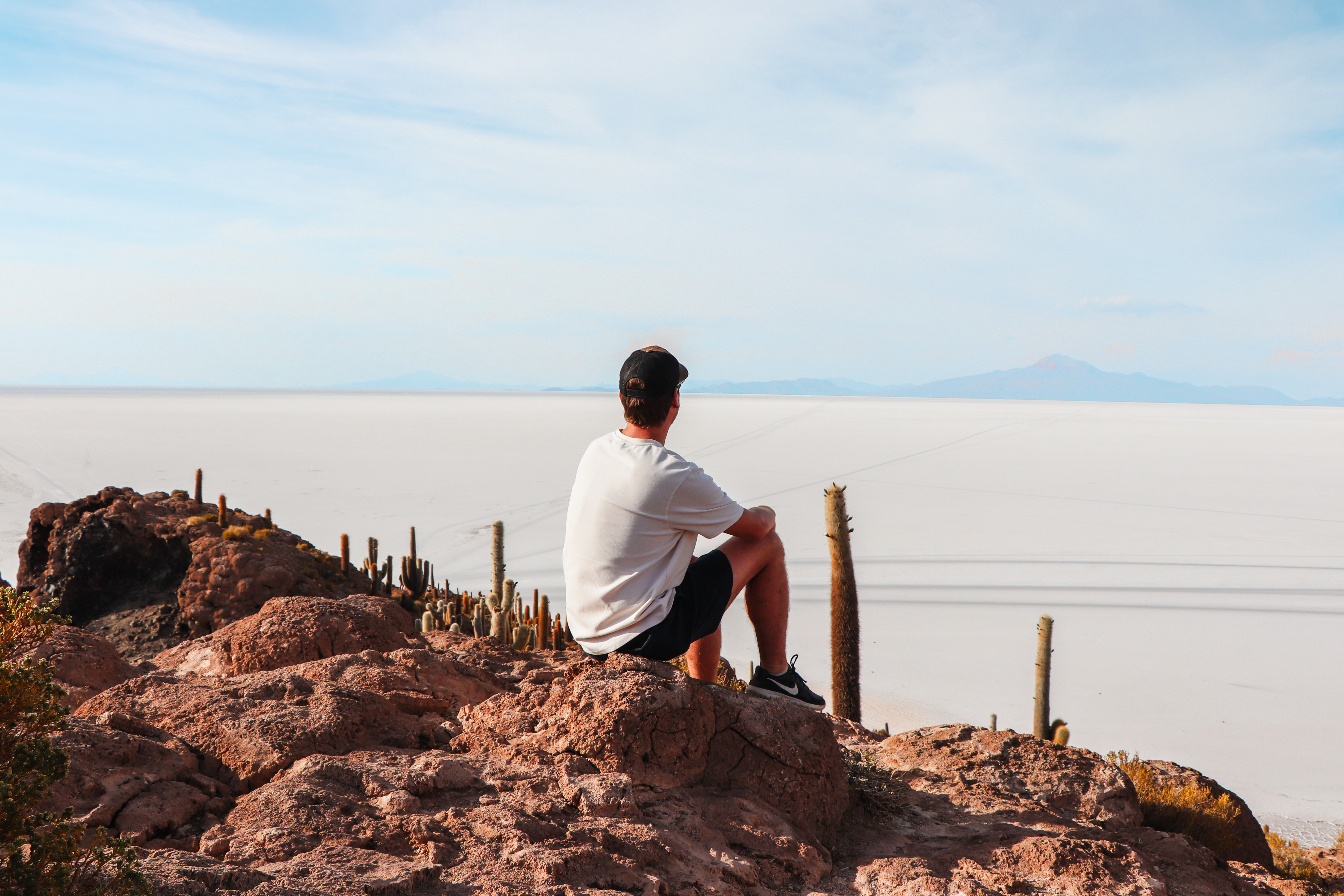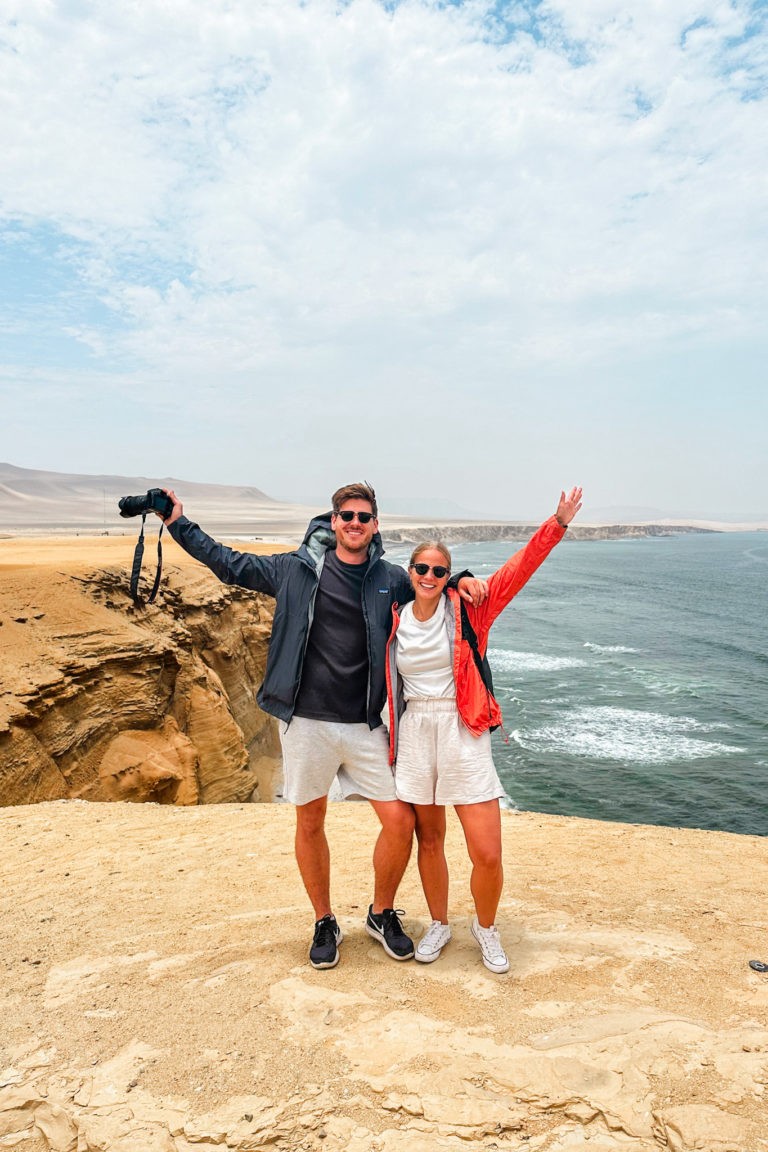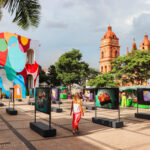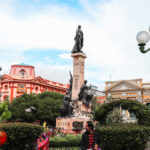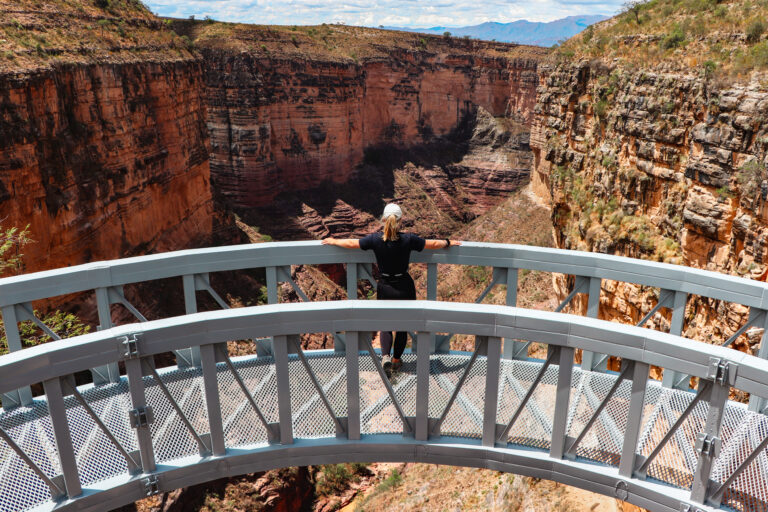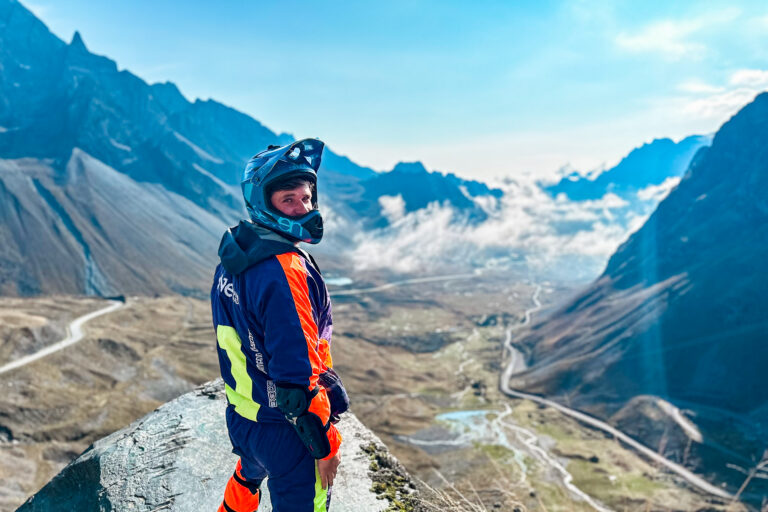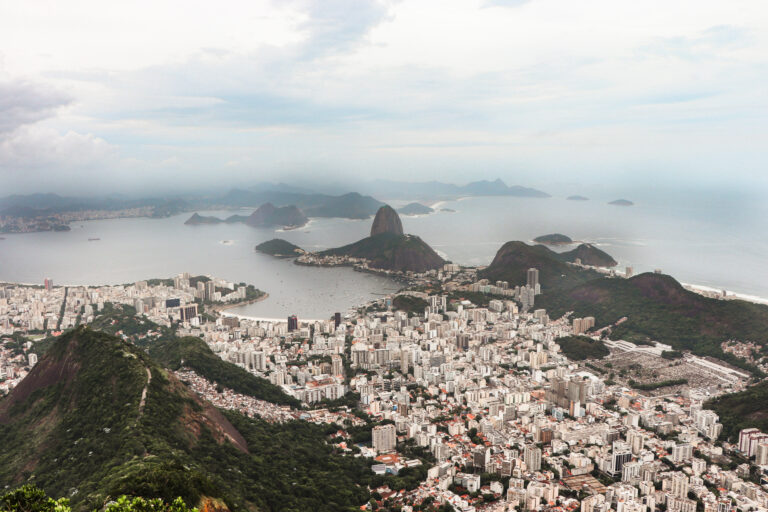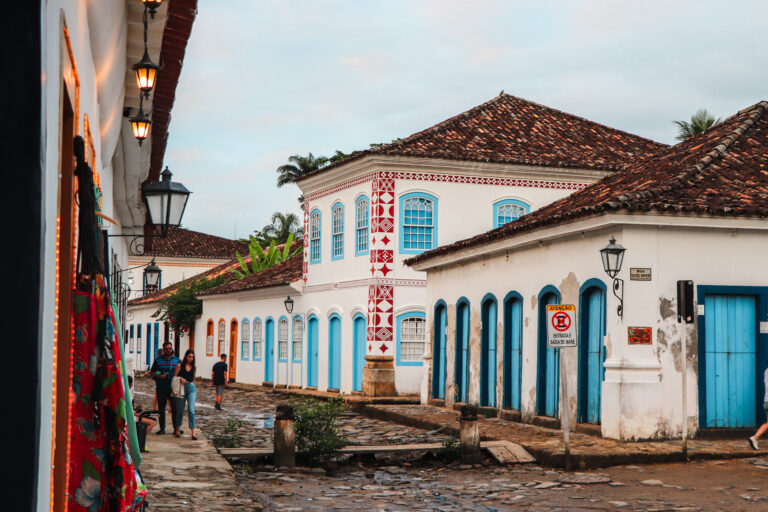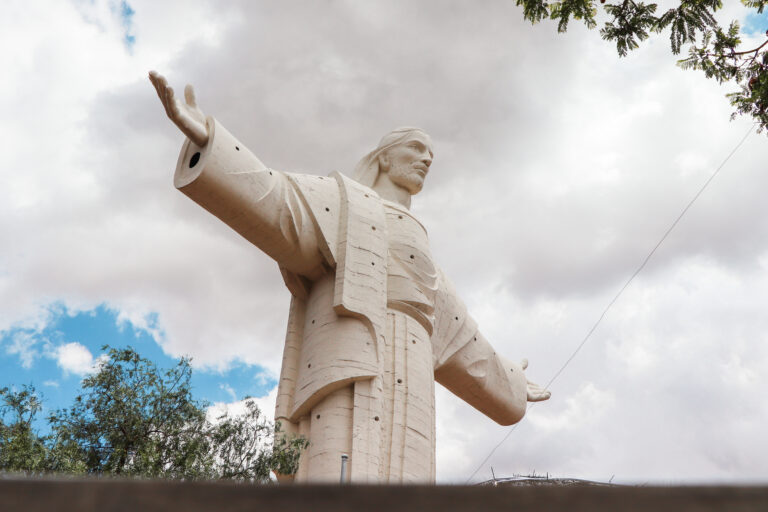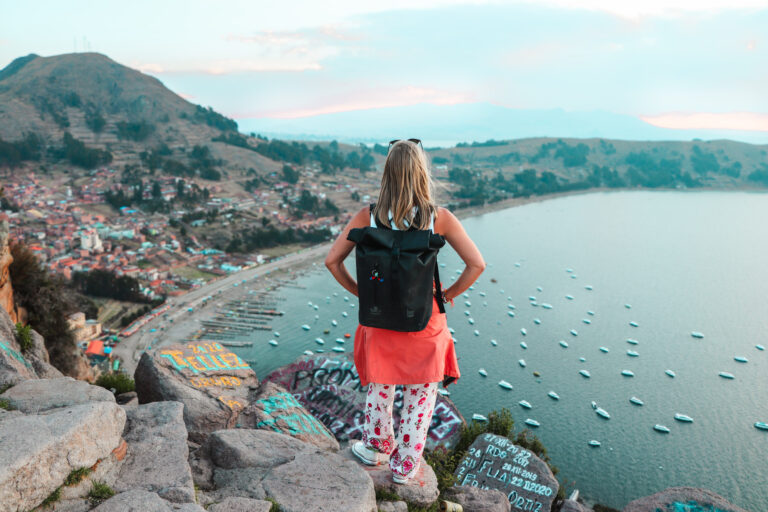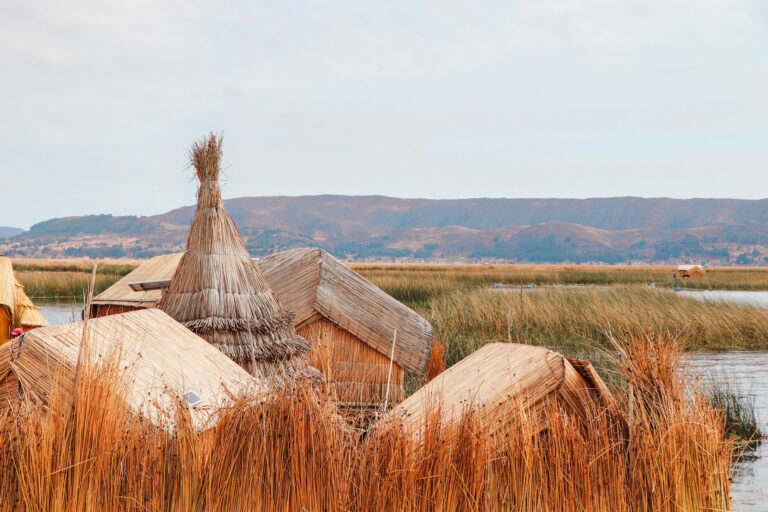Sucre is the juridical and constitutional capital of Bolivia. But it is more than that. Sucre is probably the loveliest city in the country.
Founded by the Spanish in 1538, Sucre has developed from mining roots, to become a regional center of religious, legal, and cultural affairs. It’s the birthplace of Bolivia’s independence and a perfect place to enrich your Bolivia itinerary with some amazing city vibes.

11 Best Things to Do in Sucre
Sucre was probably the coziest, most beautiful, and laid-back city we visited during our month-long trip through Bolivia. What made it stand out, for us, was the beauty of adorable, white-washed colonial art buildings, and simply the local people who were some of the friendliest we’ve met.
There are plenty of things that you can do in Sucre and you can easily visit most of the attractions in just two days. Let‘s uncover the 11 things we loved the most when we visited what we think is the beautiful little brother of the two Bolivian capitals.
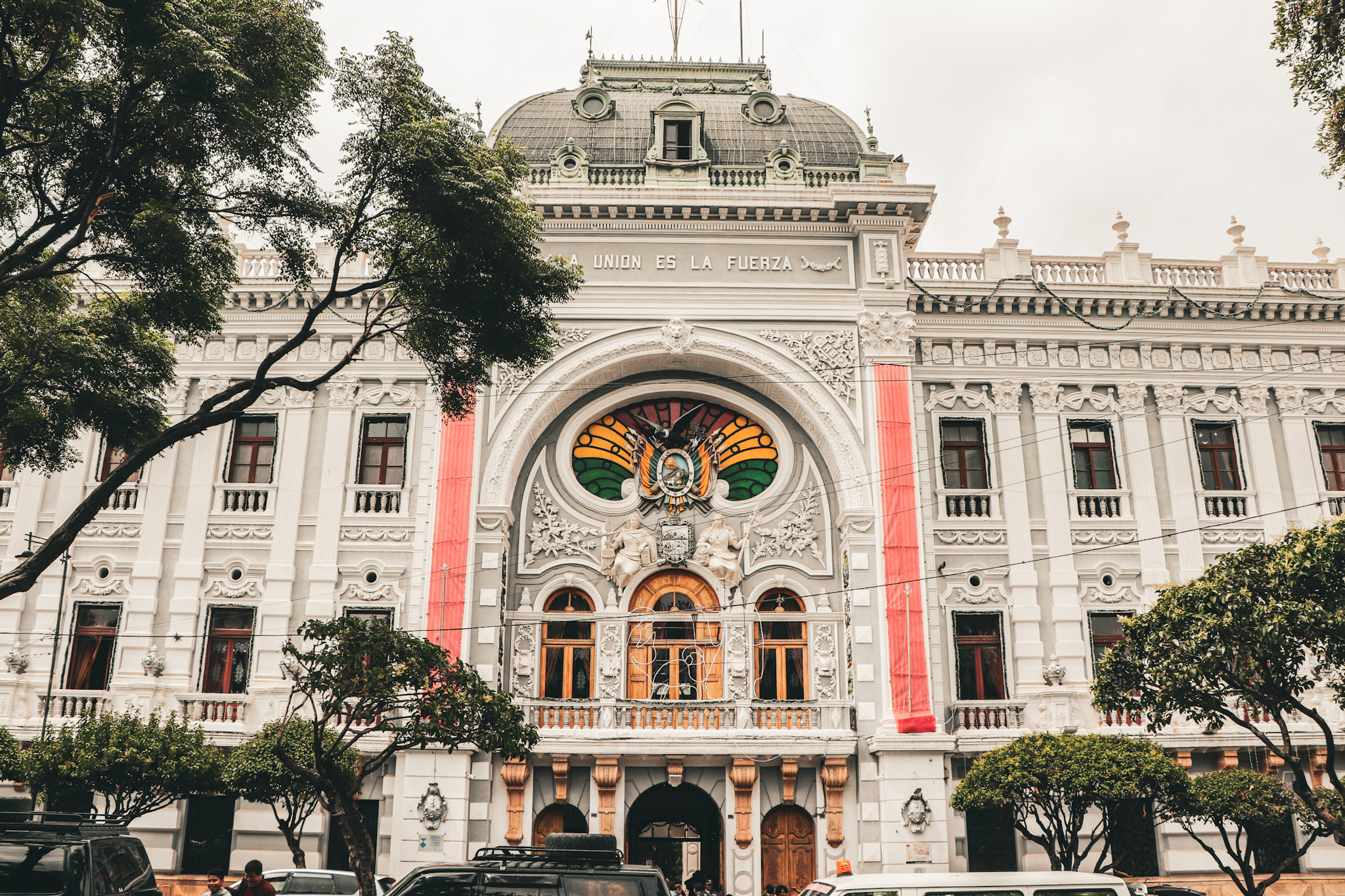
1. Explore the white streets of Sucre
Sucre is known for its beautiful architecture. When walking through the streets, you’ll easily get why this city is also often referred to as the “White City”. There are plenty of historical landmarks and buildings that have a clean, bright-white colored façade.
So, one of the best things to do is a stroll through the city and enjoy the atmosphere. Most of Sucre’s sights are within walking distance and wandering through the streets is fun. Unlike other Bolivian cities, Sucre is not too busy and pedestrian-friendly which makes walking through the city an enjoyable thing to do.
When we were in Sucre, we felt very much reminded of our trip to Arequipa, one of our favourite Peruvian cities. Sucre the Peruvian “White City”, and we loved both alike.
Relevant Reading
Register for a Free Walking Tour, to explore the city with a guide, meet fellow travelers, and learn more about the history of the town as well as the country. The walking tours usually start at 10 a.m. and 3 p.m. and take you to most of the city’s sights. As there are many different walking tour providers, choose the one that fits best with your schedule and has a decent rating.


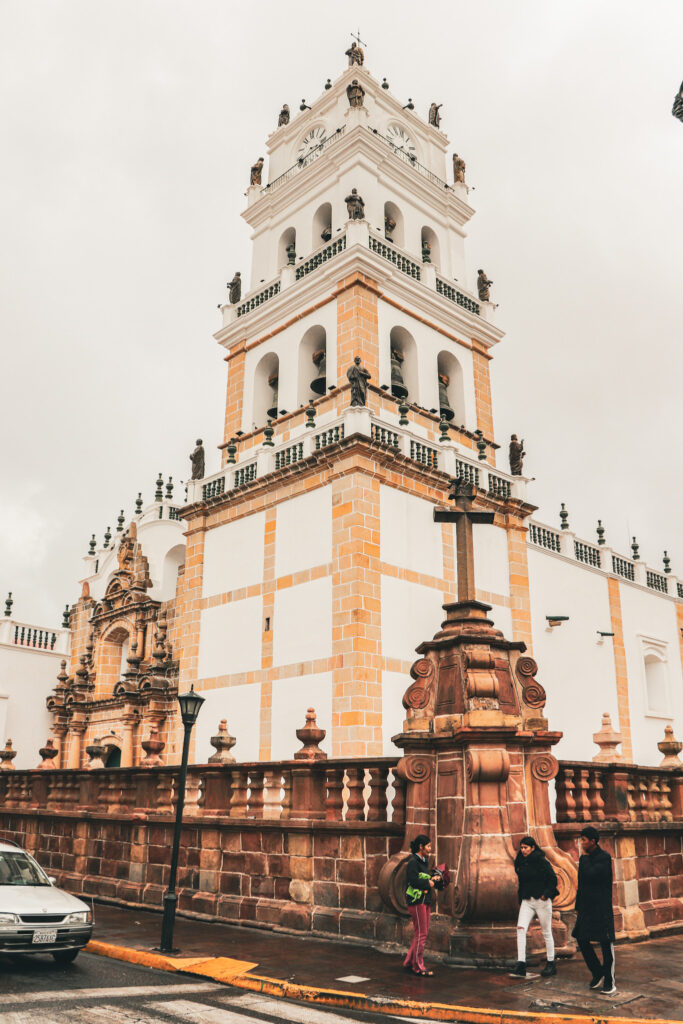
2. Stroll through the Plaza 25 de Mayo (Bolivar Park)
The Plaza 25 de Mayo is Sucre’s main square and gathering place. It’s surrounded by the most important buildings of the city, including the Cathedral (Cathedral Metropolitana), the Liberty House (Casa de La Libertad), and the State Governors House (Gobierno Autonómo).
The Plaza has a very nice and cozy park area with big trees that shade the walkways. It’s a perfect place to sit and relax, watch people pass by, and catch the local, cozy vibe of Sucre.
Visiting the Plaza 25 de Mayo as the first thing to do is a good idea. From there you can navigate to all of Sucre‘s other sights. Most free walking tours also start from here.
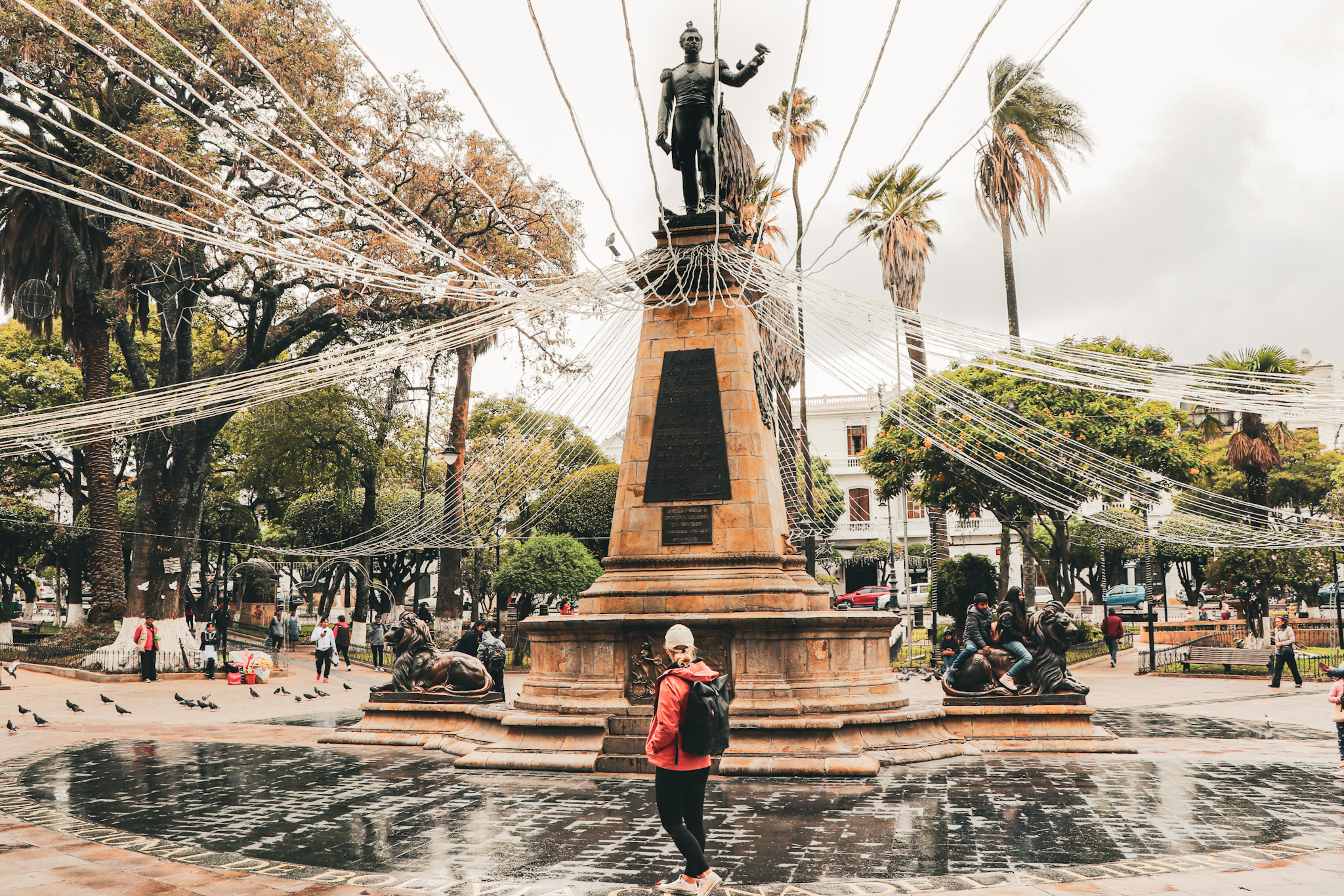
3. Visit the birthplace of Bolivia at Casa de la Libertad
If there is only one place that you could visit in Sucre, then it should definitely be the historic Liberty House. It marks the birthplace of Bolivia and is probably the most important building in the whole country.
Not only is this place an impressive piece of history, considering the turbulent past of Bolivia, but also beautiful to visit and explore. Upon entering the house, you’ll find a spacious, stone-plastered courtyard that is surrounded by two stories of white-washed archways all around. The sounds of the streets seem to vanish, and you may start thinking about the 25th of May 1825 when Bolivia penned its formal separation from Spanish rule. The day that marked the emergence of a new and free republic.
In case you want to dive into the history of Bolivia, you can enter the Liberty House Museum to learn more about the turbulent past of the country and see the original Declaration of Independence.
Visiting the Liberty House in Sucre is free and open every day from 8:30 a.m. to 12:30 p.m. and 2:30 p.m. to 6:30 p.m. (Saturday & Sunday only before noon). The entrance fee to the Liberty House Museum is 15 BOB (≈ 2 USD). Because all displays inside the museum are in Spanish, we highly recommend going with an English-speaking guide.

4. Watch the sunset from the convent of San Felipe Neri
The convent of San Felipe Neri is a former monastery from the 17th century and an exquisite piece of colonial architecture. Very much like the Liberty House, the inner courtyard is surrounded by graceful arches, a fountain, and the convent’s white-washed bell tower. It’s a calm and enclosed place midst of Sucre, where you can relax and wind down.
When you’re done admiring the inside of the convent, don’t leave just now. There is an even better place to explore. From the outside of the convent, there is a wooden door that leads to the bell tower. From there, you will have an unmatched panoramic view of the city. Find yourself a spot on the brick floored terrace to watch the sunset over Sucre or climb up the small stairs inside the convent’s bell tower for some great shots of the “White City of Americas”.
The church is open to visitors every day (except Sundays) from 2:30 p.m. to 5:30 p.m. To enter the rooftop, find the entrance at the side of the church, around 30 meters (98 feet) away from the main entrance. Look for a wooden door and knock it, if it is not open. Foreigners pay 17 BOB (≈ 3 USD) to access the rooftop terrace.
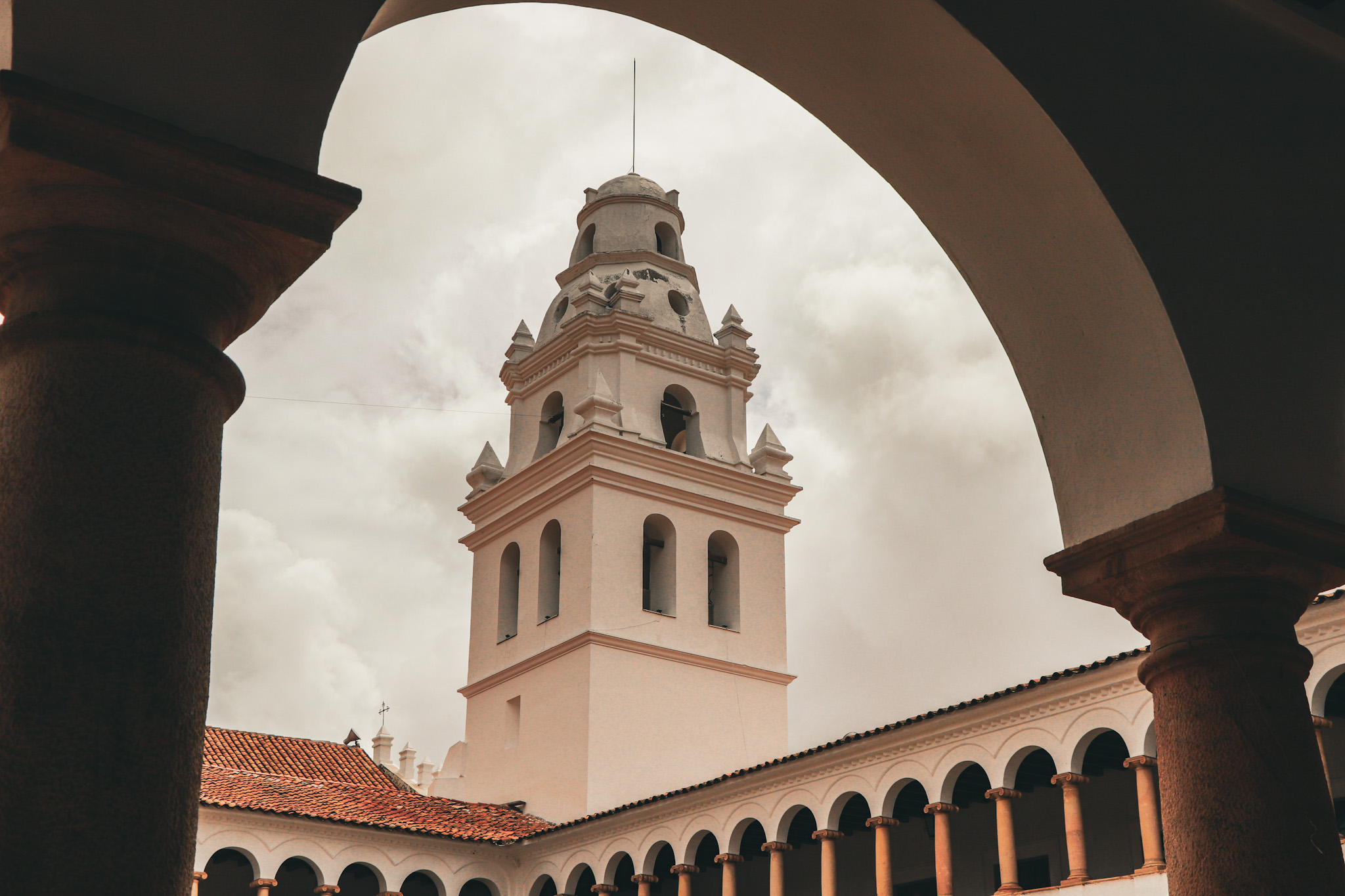
5. Hike to the Recoleta Viewpoint and Monastery
It seems that we were unlucky the day we hiked to the Recoleta Viewpoint, as the weather wasn’t in our favor. Maybe because Laura didn’t finish her plate the night before (German saying). But most probably just because we were visiting during the rainy season. Thus, once we arrived at the viewpoint, we were greeted with rainfall and a closed monastery.
Nonetheless, we imagined how beautiful the views with sunshine would be, so we took some shots and left for dinner. We loved to see all of the white city buildings from above and so we think you should visit the viewpoint when in Sucre – hopefully with more pleasant weather.
Getting to the Recoleta viewpoint is an easy 25-minute walk up a hill. There, you can relax at the Plaza. We‘d say, it is the second-best place to watch the sunset in Sucre, right after the rooftop of the convent of San Felipe de Neri.
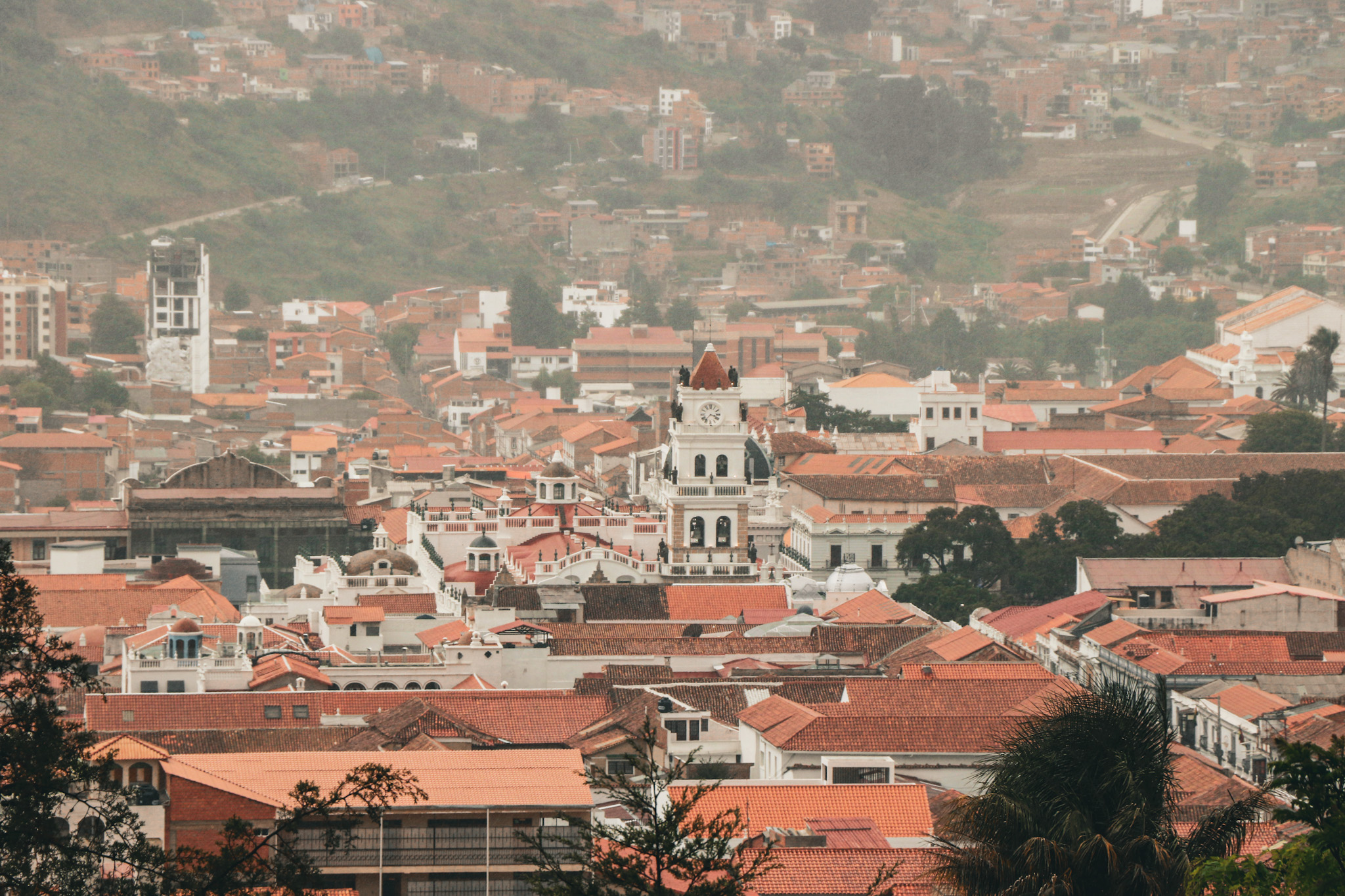
6. Indulge into the culture by visiting the Ethnological & Folklore Museum and the Museum of Indigenous Art
Not far from the Recoleta viewpoint and monastery, you can find a museum that takes you on a journey through the culture and customs of Bolivia. The Museum of Indigenous Art (Museo de Arte Indigéna) is a must-see for anyone interested in the rich textile traditions of the indigenous communities.
Here you can visit 9 rooms full of different colorful textiles, from partially woven rugs, and ancient textile items, to skeletons with intriguing items found in graves. You’ll learn about weaving techniques and why it takes weavers a full working day to fabric a little over a centimeter in woven textile.
The Museum of Indigenous Art is open every day from 9:00 a.m. to 12:30 a.m. and from 2:30 p.m. to 6:00 p.m. It’s a little uphill and a 20-minute walk from Sucre’s main square, so it’s best to combine it with your visit to the Recoleta viewpoint. Photos are not allowed inside the museum and the entrance costs 25 BOB (≈ 4 USD). Expect to spend around 2 hours there, if you want to explore everything the museum has to offer.
You’ll be handed a guidebook to read through with text clearly marked up for each exhibit. Guidebooks are available in many different languages and are properly translated. It’s super convenient, and you don’t need to pay extra for a guide.
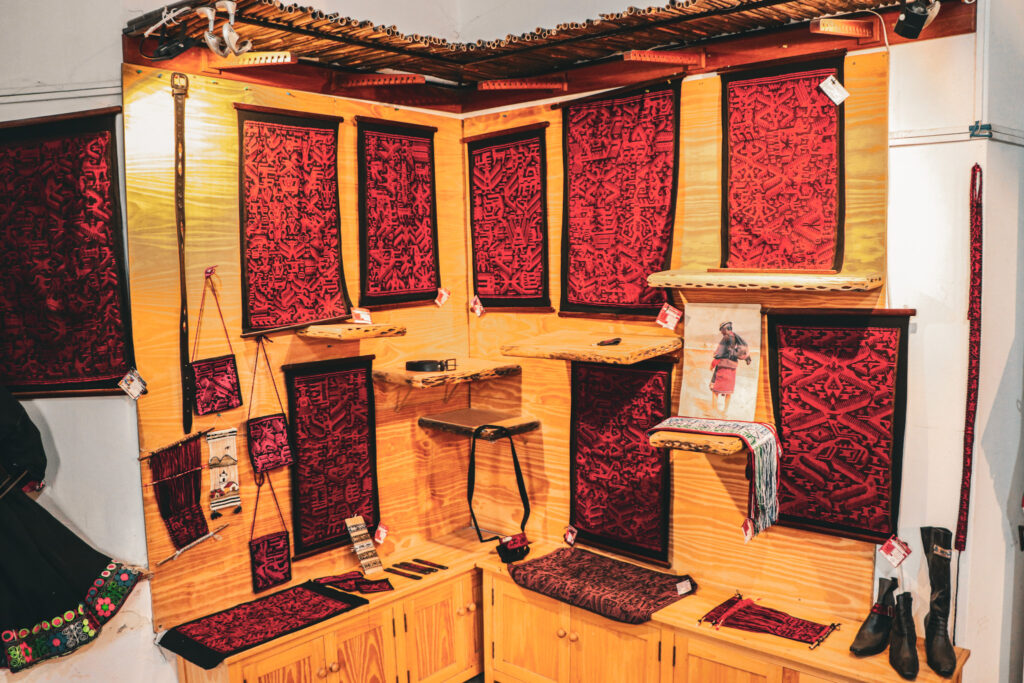
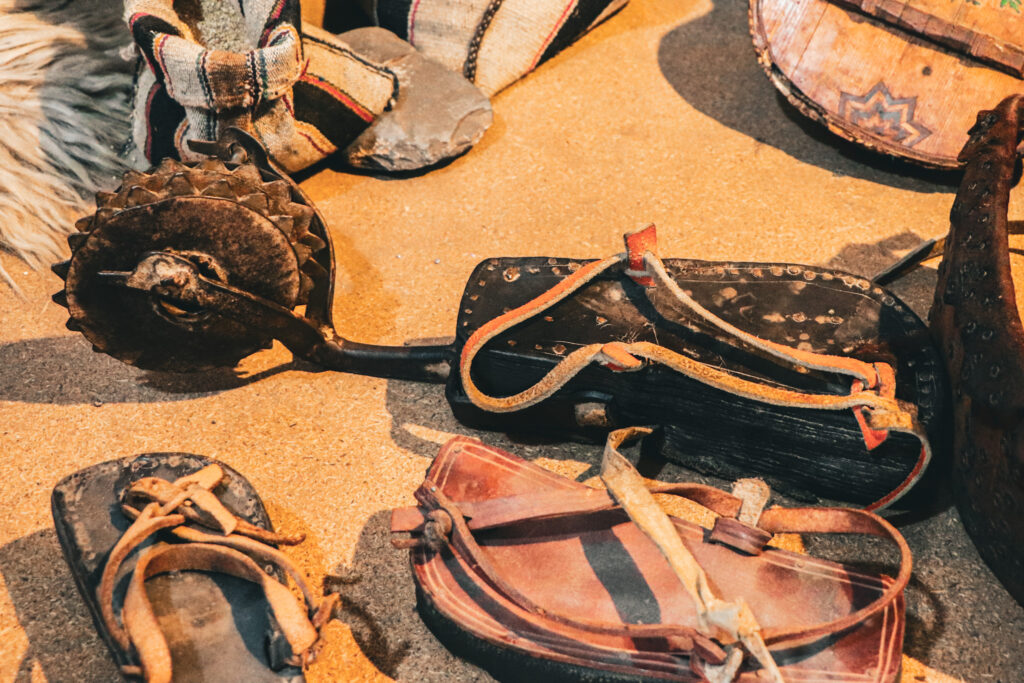
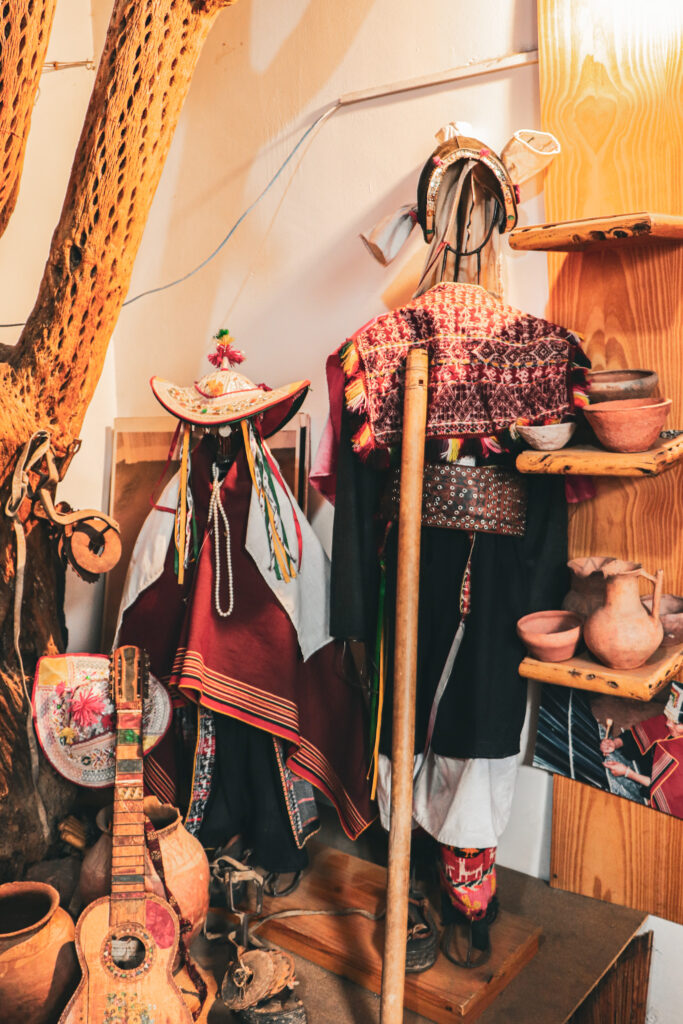
7. See the Mini Eiffel Tower in Simon Bolivar Park
We love the fun things you see when traveling. The Mini Eiffel Tower is definitely one of them. Totally unexpected, and more than thousands of kilometers away from France, you find a mini replica of the famous Tour de Eiffel of Paris.
Unlike the Iron House that we found in Iquitos, a city midst of the Peruvian rainforest, the Torre Eiffel in Sucre is proven to have been designed by the famous Gustav Eiffel.
Relevant Reading
Don’t set your expectations too high, though. With a height of only 35 meters (115 feet), it’s no massive building. It’s a cute little tower, and for that, we still think is worth a quick visit, when in town. There are not too many cities on earth that can brag about having an Eiffel Tower – we only knew Paris.
You find the Torre Eiffel a 10-minute walk from the Plaza 25 de Mayo, the main square of Sucre. Entrance is free and -if you’re lucky and the tower is not closed- you can actually climb the overly small steps.
8. Follow the footsteps of the dinosaurs (Dinosaur Park)
We are sure that by now, you got a glimpse of why we found Sucre to be a lovely and cozy city. But there is more to Sucre than just its aesthetics.
Bolivia is known for having some of the best-preserved dinosaur footprints in the world. That is because, million years ago, Bolivia once was a vast wetland with muddy plains. Dinosaurs left their footprints in its soft mud, which later dried, solidified, and buried into the soil.
There are a couple of places such as the Torotoro National Park, where you can see them fossilized in the ground. And if you don’t have the time to travel to Cochabamba to see them in nature, then visiting the Dinosaur Park (Cal Orck‘o) in Sucre is the thing to do.
Relevant Reading
The highlight of the park is a near vertical 80 meters (262 feet) tall and 1,200 meters (3,937 feet) long wall, where you see hundreds of dinosaur footsteps. It is considered the largest set of dinosaur footprints in the whole world. You can climb the wall, visit the viewpoint, or learn more about dinosaurs in the park‘s building.
The Cal Orck‘o is a 15-minute ride from Sucre. It is open every day, except Monday, from 9:30 a.m. – 5:30 p.m. To get there, it’s best to take a taxi from the main square for around 20 BOB (≈ 3 USD) to 40 BOB (≈ 6 USD) or the Dino Shuttle Bus (a red double-decker bus). Both leave at the Plaza 25 de Mayo. The entrance to the park costs around 30 BOB (≈ 5 USD), including a walking tour to the footsteps.
If you plan to climb the wall, plan to visit the Dinosaur Park before noon. There are only two walking tours daily at 12 p.m. and 1 p.m.

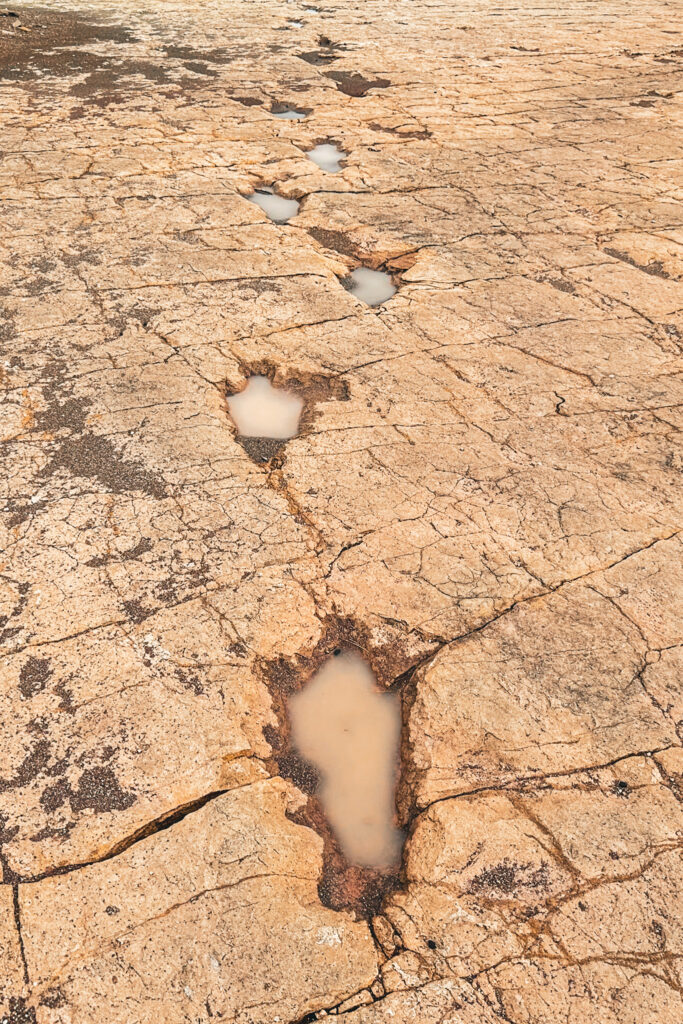
9. Buy fresh fruits at the Mercado Central
Another great thing to do in Sucre is to visit the Mercado Central. It’s a busy and extraordinary market, where you find delicious and fresh fruits, flowers, and spices.
We went there hungry and so we tasted ourselves through almost everything they had to offer. From ripe mangos, over freshly mixed passion fruit juice to a lychee-like fruit called achachairu (yummy!).
You’ll find a local food court on the second floor of the market building. There you can try some of the Bolivian specialties, such as the delicious Sopa de Mani (Traditional beef and peanut soup) or Lawa Soup (Very thick corn soup with red potatoes).
The Mercado Central is only a 5-minute walk from the Plaza 25 de Mayo, the main square of Sucre, and is open every day from 6 a.m. to 6 p.m. However, we‘d recommend you go there early, to catch the busy market vibes, and surely the freshest fruits. What we loved the most is that it wasn‘t touristy at all, but that is true for almost all sights in Sucre.


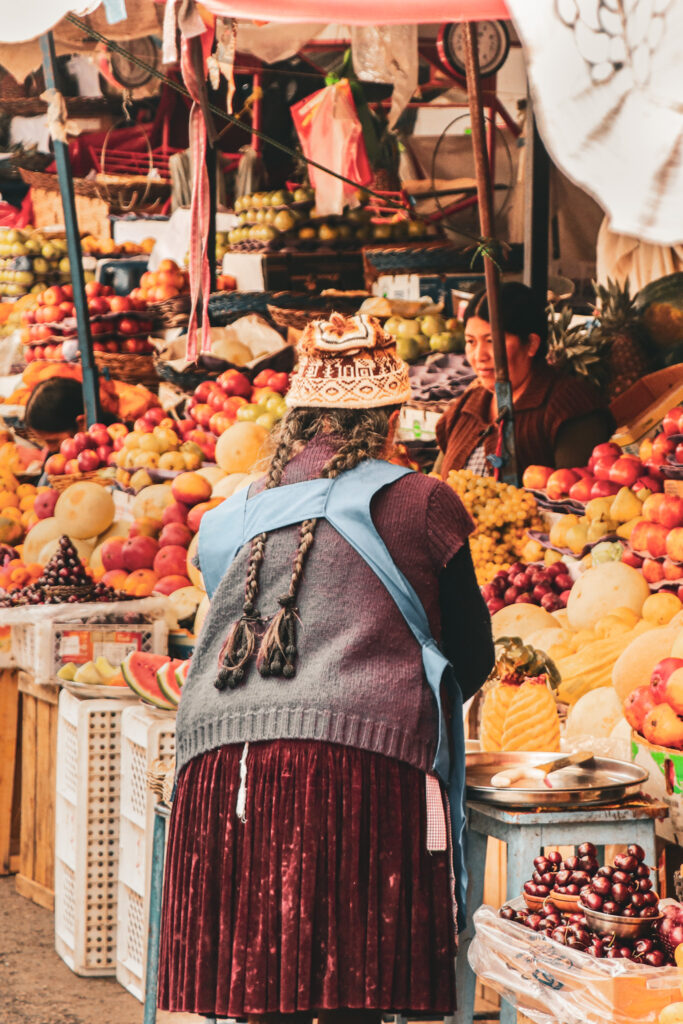
10. Eat delicious Saltenas
As we started to talk about the traditional dishes of Bolivia already, there is one more thing that is a mandatory must-eat when in Bolivia. Saltenas are the Bolivan version of the Spanish Empanadas. The difference is that they are baked instead of deep-fried. They come with different fillings, such as vegetables, beef, or chicken, and come in handy as a delicious snack to grab while you explore the city.

11. Enjoy a show of traditional Bolivian folklore
If you have seen too many colonial buildings or are tired of visiting other museums, then going for dinner and watching traditional folklore at Origenes Espacio Cultural is a perfect thing to do for the evening.
Be prepared for a very different experience. We’ve seen the weirdest traditional dances all over the world, and Bolivian folklore definitely saves its spot on our list. They play with fire, dance in a bent-over position, use different kinds of masks and clothing, walk among the guests, and encourage you to join the show.
We loved the dance, and, for us, it was a perfect evening activity in Sucre. Make sure to reserve a table at Origenes Espacio Cultural the day before. The ticket for the 2.5-hour long show costs 120 BOB (≈ 18 USD) or 170 BOB (≈ 26 USD), if you’d like to have dinner included. Shows take place every Wednesday to Saturday and start at 8 p.m.
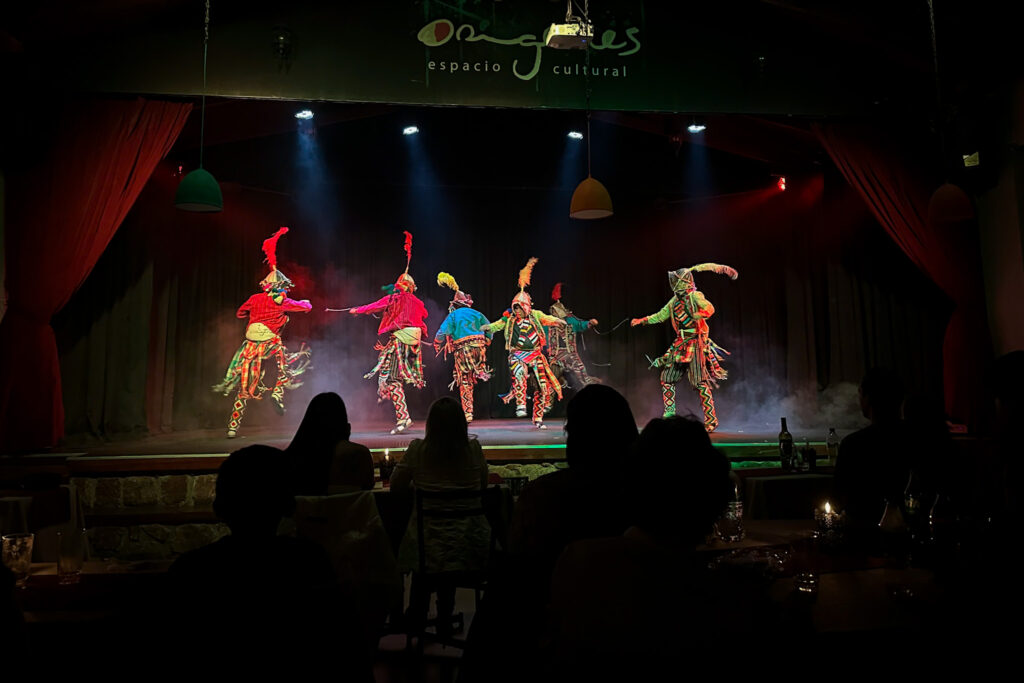

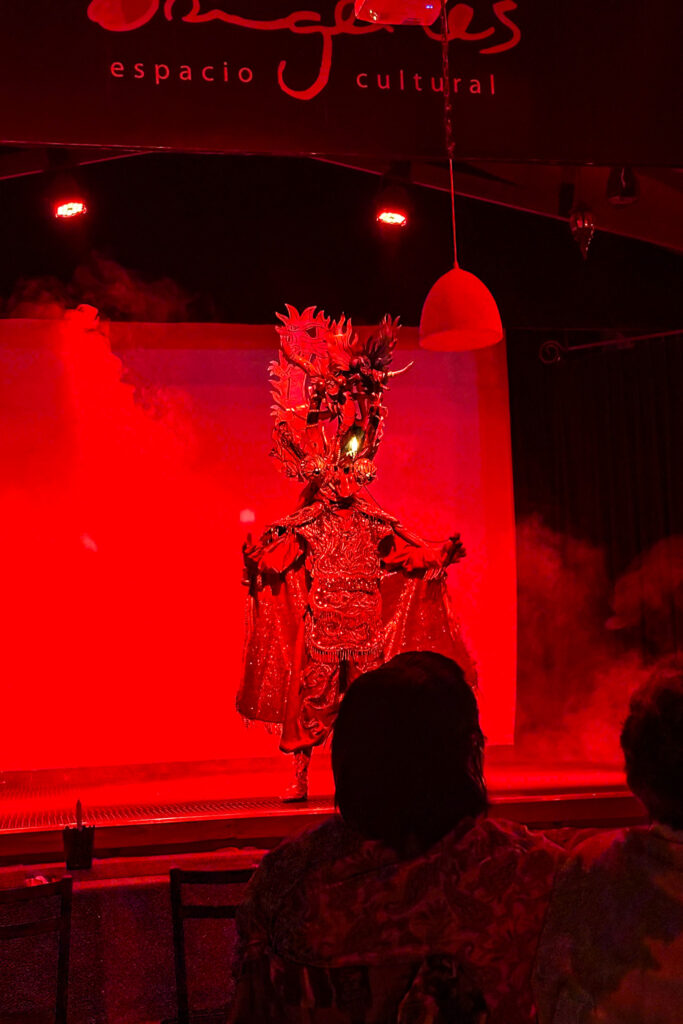
How to get to Sucre?
Before we talk about getting to Sucre, let’s quickly talk about how to get to Bolivia first.
Although Sucre is the capital city and has an airport, it isn‘t well-connected internationally. This is where Santa Cruz de la Sierra comes in. The city of Santa Cruz is the most populous of the country and a major gateway for tourists arriving from international destinations. So, when traveling to Bolivia, chances are high that you’ll arrive in Santa Cruz and travel to Sucre from another popular nearby city.
That is why in the following, we listed the ways to get to Sucre from all common tourist destinations in Bolivia.
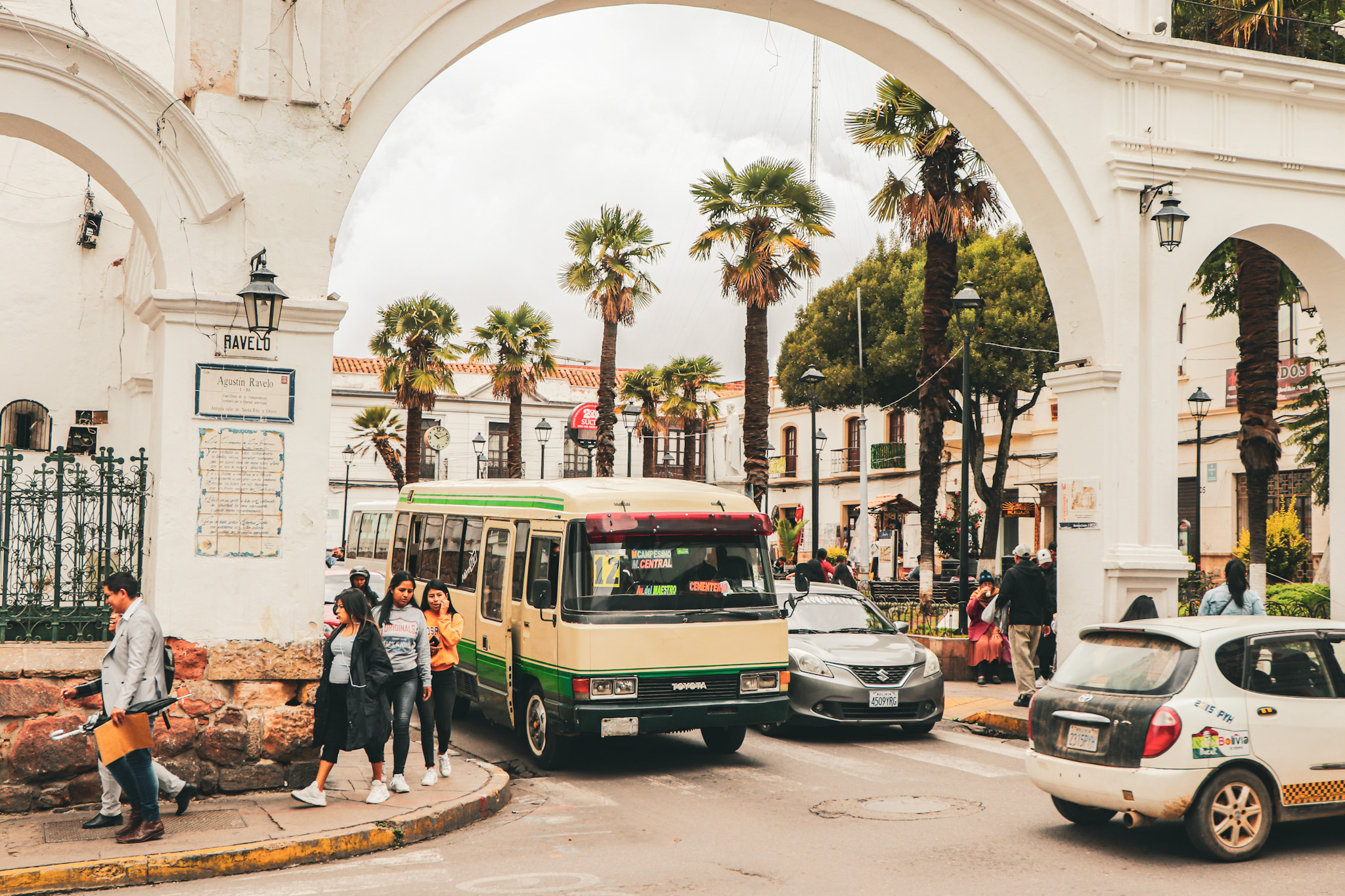
From La Paz to Sucre
You can get from La Paz to Sucre by either hopping on an 11-hour bus ride or by taking the plane.
Three buses leave from La Paz at the Terminal de Buses La Paz and depart in the evening between 7 and 7:30 p.m. The journey is an overnight trip, so be prepared for a long ride. Make sure to check the bus schedules or choose to book your ticket in advance before going to the terminal. A bus ticket from La Paz to Sucre costs between 150 BOB (≈ 23 USD) and 200 BOB (≈ 30 USD) and can be purchased online or once you get to the terminal.
The airports of La Paz and Sucre are directly connected with each other, which makes flying a convenient option.
Plane tickets from La Paz to Sucre are quite affordable, starting from 295 BOB (≈ 44 USD) for a one-way trip. The flight from Sucre to La Paz takes around 1 hour and is surely the most convenient option. You can compare the flight prices here.
Relevant Reading
From Uyuni to Sucre
From Uyuni, you can take an 8-hour direct bus ride to Sucre or choose to fly from the Joya Andina Airport (UYU), a super small airport in Uyuni. However, there are no direct flights from Uyuni to Sucre and most of them include a long stopover in La Paz. Because of the longer travel time, we recommend you take the bus or choose spend some days in La Paz, before continuing your journey to Sucre.
Buses are overnight buses that all leave Uyuni from the local bus station between 9 and 10 p.m. The bus ticket costs between 100 BOB (≈ 15 USD) and 120 BOB (≈ 18 USD), depending on the bus company you choose. It’s best to look up the current bus schedules or book your ticket in advance before going to the terminal. The bus tickets in Uyuni sell out pretty quickly.
Relevant Reading
From Santa Cruz to Sucre
From Santa Cruz, you can easily take a domestic flight from the Santa Cruz Viru Viru International Airport (VVI) to Sucre. Domestic flights in Bolivia are very affordable and plane tickets start from as low as 222 BOB (≈ 33 USD) if you manage to book your trip a few days before, up to 406 BOB (≈ 61 USD) for a last-minute flight to Sucre. It’s the best option if you want to travel efficiently, and worth every penny.
Your next best option is taking a bus from Santa Cruz to Sucre. A direct bus ride from Santa Cruz to Sucre takes around 13 hours and costs 104 BOB (≈ 16 USD). Tickets can be purchased at the Terminal Bimodal in Santa Cruz or online. To get to the bus terminal, take an Uber, as they are readily available in Santa Cruz.
However, we wouldn’t recommend taking the bus for two reasons: Buses in Bolivia often get delayed or break down. That’s surely nothing that you would want to experience when traveling for such a long time. And secondly, the price difference for a flight ticket is too small compared to the level of convenience you get when flying (13 hours versus 45 minutes).
Relevant Reading
From Cochabamba to Sucre
From Cochabamba, you can either fly directly to Sucre or take the bus.
Flying from Cochabamba to Sucre is, again, super affordable, and ticket prices start from 210 BOB (≈ 32 USD). The flight takes 40 minutes and it’s your best option to travel between both cities.
The bus ride between Cochabamba and Sucre takes around 8 to 9 hours. Buses leave Cochabamba in the evening from the Terminal de Buses here and tickets cost between 95 BOB (≈ 14 USD) and 155 BOB (≈ 23 USD). Trans Copacabana and 6 de Octubre are the only bus companies between Cochabamba and Sucre. You can check their schedules here. To get to the bus station, order a taxi from your accommodation. Uber is not working reliably in Cochabamba, as there are too few drivers.
Relevant Reading
Where to stay in Sucre?
The best districts in Sucre are the Centro Historico and San Francisco. Both districts are central and in walking distance to most of the Sucre’s attractions and sights. The Centro Historico is definitely the liveliest area with plenty of restaurants and shops, but also busy and noisy at times. San Francisco is located a little more north to the center and thereby a bit quieter with some nice hotel options.
Compared to other cities in Bolivia, Sucre has a lot of small side streets that aren’t heavily frequented. That’s why we recommend you choose a hotel close to the center, but a little off from the next main road. We stayed in such place, and if you’re interested, have a look at our accommodation picks.
Where to eat in Sucre?
Unlike other Bolivian cities, there are plenty of good and healthy food options in Sucre. You’ll find some cozy coffee places, tasty international cuisine, and local street food. For us, after traveling across the county and passing by small villages, it was always a feast once we reached the next big city. After eating fried food for too long, we finally got some delicious Thai curries, Ceviche, or Poke Bowls again.
But we still remember one specific Venezuelan restaurant in Sucre, that we recommend everybody to visit. While we have never eaten Venezuelan dishes before, their Arepas and Cachapas were so mouthwatering that we ended up visiting them multiple times. Definitely give them a try, when in Sucre!
So, here are the three restaurants that we loved the most in case you are looking for some solid recommendations.
Bienmesabe
- Venezuelan
- Budget
Very delicious Venezuelan cuisine. They offer giant Arepas and Cachapas. From vegetarian options to pulled pork. We ordered three, but, believe us, one for each is more than enough!
WOW Coffee Sucre
- International
- Budget
Small, but cozy coffee place. They serve delicious breakfast and freshly ground coffee. Plus, it’s the only coffee open from 7 in the morning, which is super convenient if you’ve just arrived by night bus.
Restaurant Florin
- International
- Moderate
If you are desperately looking for some good burgers and beers, then Restaurant Florentin is your best choice. They serve beers in all sizes and the burgers are just yummy!

How to get around Sucre?
Getting around Sucre is pretty straightforward. Most of the best things in Sucre are in short walking distance from the city center. As we described earlier, start your city tour from the Plaza 25 de Mayo and spend your day walking around the city.
Uber or other ride sharing apps are not available in Sucre due to the low demand. So, if you are trying to get somewhere more remote, then hopping on a bus or hailing a taxi is your next best option. For taxis, it is best to take one from Sucre’s main square. Expect to pay around 15 BOB (≈ 2 USD) to 25 BOB (≈ 4 USD) for a city ride. For buses, you just hop on the bus, pay the driver a fixed rate of around 4 BOB (≈ 1 USD) and hop off at any time along the street.

When is the best time to visit Sucre?
Unlike La Paz, Sucre enjoys pleasant temperatures year-round. So, there is little excuse to not visit Sucre as part of your trip though Bolivia.
The best time to visit Sucre, is during the dry season from April to October. During this time, skies are clear and there is a minimal chance of rain. Because, ultimately, you’ll want to explore the city having the best weather.
We visited Sucre in December and had too little sunshine and too much rain. But we still enjoyed our time in the city a lot.
Temperatures in Sucre are mild and fresh at almost every time of the year. Bolivia is one of the highest countries on earth after all, and with its altitude of 2,790 meters (9,154 feet) Sucre is no different. Expect temperatures between 10°C to 20°C throughout the year and definitely pack some layers of clothes for your stay.
Here is our monthly overview of the peak average temperatures, as well as our recommendation on when to travel to Sucre.
What does it cost to visit Sucre?
While staying in Sucre is a little more expensive compared to La Paz or Santa Cruz, it is still a very affordable city. Compared to other countries in South America, such as Brazil, the cost of accommodation, food, transportation, and tours in Bolivia is fairly low. Your travel style and the accommodation you choose for Sucre influence your budget the most. Don’t expect to pay much for food and transportation though.
Count with around 24 USD a day for a budget trip to Sucre, up to 140 USD if you want to travel with more luxury.
Here is our breakdown of the average daily costs, based on our visit to Sucre.
How many days to stay in Sucre?
Sucre has no wonders of the world nor world-famous tourist attractions. It’s a cozy and lovely city, that is surely among the most beautiful in the country. We think staying for 2 to 3 days in the city will give you enough time to visit all of the best things to do in Sucre.
Spend your first day in Sucre by taking a free-walking-tour through the city. You’ll get to see the city’s main square, visit the country’s historic freedom house, stroll through the local Mercado Central, and hike to the Recoleta viewpoint. If you still have energy, plan to visit the Origenes Espacio Cultural for dinner and enjoy a traditional Bolivian folklore show.
On your second day, get yourself a freshly brewed coffee or tea in one of the plenty coffee places in Sucre. Once you’re ready to kick-off your day, hop on a taxi or bus from the Plaza 25 de Mayo to visit the Dinosaur Park for noon. Spend your afternoon and evening by visiting the Mini-Eiffel tower of Sucre and watch the sun set from the convent of San Felipe Neri in the evening.
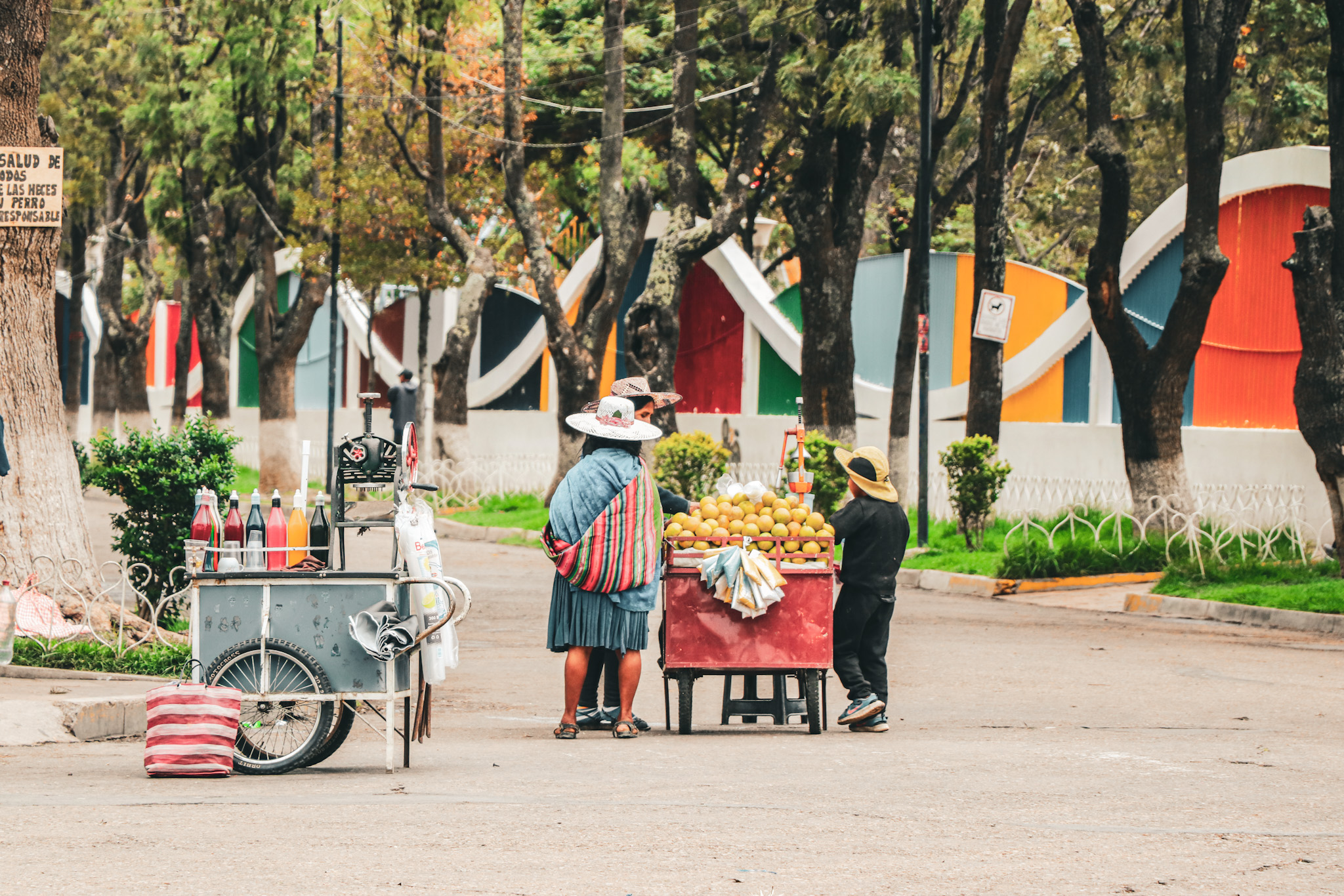
Is Sucre safe to visit?
Sucre is considered one of the safest cities in Bolivia. It has a comparably low crime rate, and tourists are rarely targeted. But as it is always the case with safety, it’s mostly about how you perceive it personally and about how cautious you are.
When we were walking through the streets of Sucre, we never felt unsafe. It seemed that the city really benefits from its high student population, the laid-back atmosphere, and its small size. People were different in Sucre, and while we have never had problems in whole Bolivia too, we felt particularly safe in Sucre.
Sure, there is no guarantee that you will experience the city’s safety the same way we did. However, it’s always a good idea to exercise common sense safety precautions, such as avoiding rural areas, not carrying loads of cash with you and don’t expose your valuables in public. We only ever take the things with us that we need and advise you to do the same.
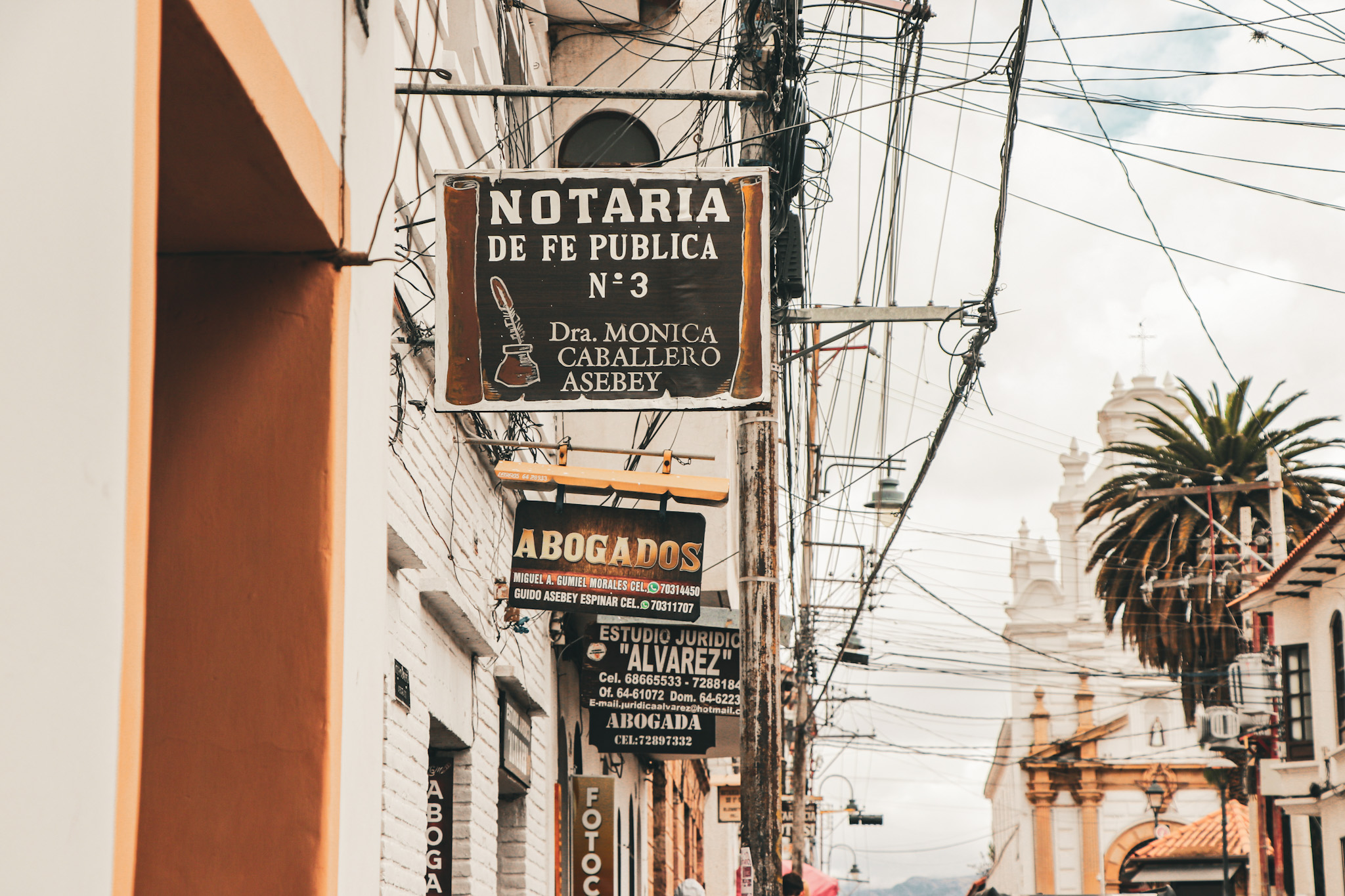
Is going to Sucre worth it?
A trip to Sucre is not about superlatives, heart-pounding thrills, or world-famous activities. While La Paz presents itself as maybe one of Bolivia’s weirdest cities, Sucre is a place to indulge into the beauty of history and culture of the country.
When we traveled to Sucre, we were astonished by the city’s beauty. We enjoyed walking through the streets, chatting with locals, and simply enjoying some relaxing days in the city. For us, it was just the right thing to do, after our exciting trip to the Uyuni Salt Flats. All in all, we think Sucre deserves its place on every traveler’s Bolivia itinerary and holds up to what you would expect from a magnificent capital city.

